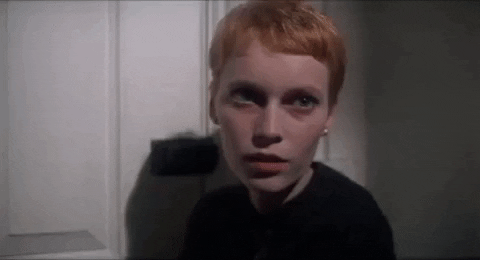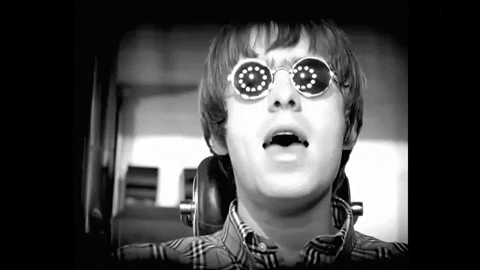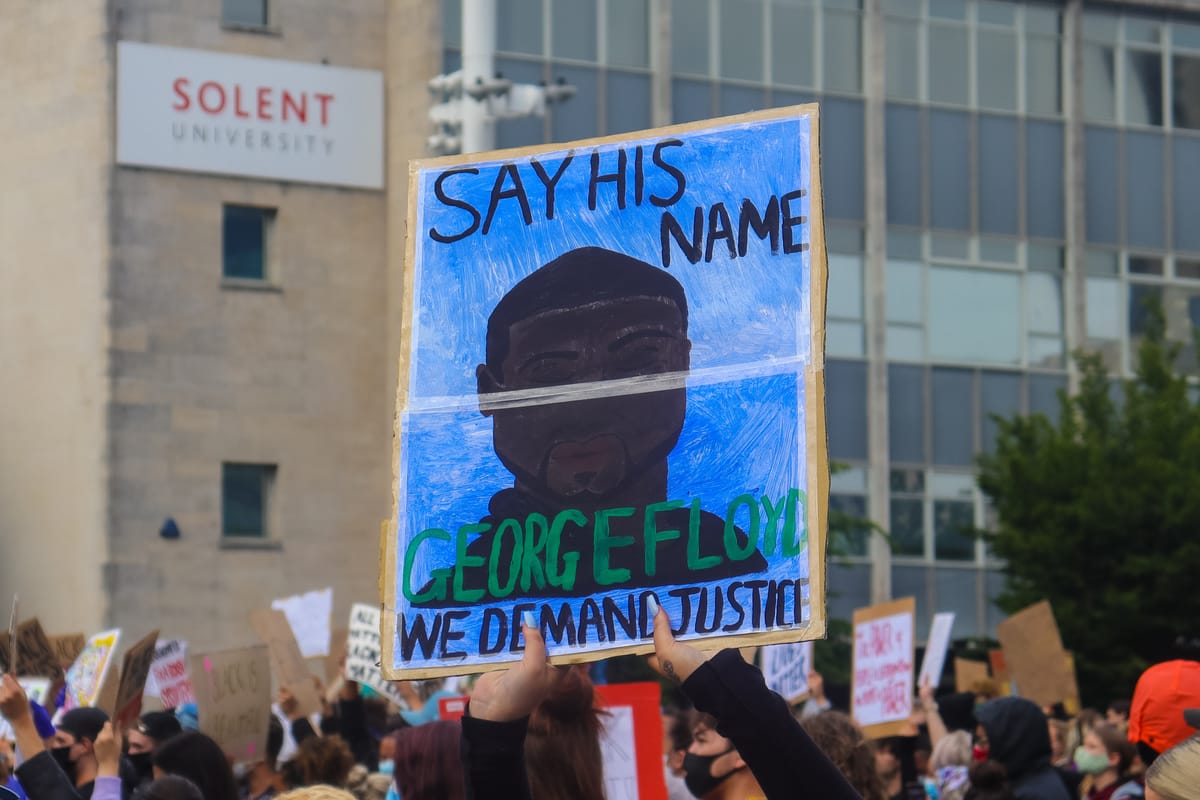A version of this post originally appeared in the May 28, 2020 issue with the email subject line "Amending the narrative."
This newsletter centers on understanding how people understand what we’ve come to understand as “content” in an increasingly computerized world. When we go deeper, about how content upholds established systems. I don’t intend to stray from that theme.
To all the new subscribers, though, particularly all of you from Lithuania and others outside the U.S.: I try to address more universal digital themes, but today I have to talk about my neighborhood and my city and how police killed a man while he pleaded for his life and his neighbors pleaded for his life.
How police and media escalated conflict and blamed it on the neighborhood.
How city and state leadership did nothing to stop the violence against the neighborhood.
How major local media outlets perpetuate and exacerbate this violence.
How racism runs through my city — through the businesses where I’ve worked, the leaders I have worked for, through media and “content” I read.
What happened in Minneapolis?
I am not a reporter. Here is the narrative as I understand it, from my apartment ten blocks away from the site of George Floyd’s murder. I gleaned much of my information from reporters on Twitter and stripped-down media sources. I have not watched the videos; I can understand what happened without watching.
Content warning for some of the below: I trying to describe directly what happened. It is disturbing, so please, if you already have your own account of events, don’t feel the need to read through mine.
At the urging of local billionaire-owned media, despite plenty of evidence that increasing policing does not reduce crime or improve communities, Mayor Frey and the Minneapolis City Council voted to expand police funding in December 2019.
On Monday afternoon, a corner store called the Minneapolis Police Department for a suspected forgery — for a suspected counterfeit $20.
George Floyd was sitting in his car. Cops asked that George Floyd exit his car. He did as asked. He was unarmed. When he did not fully completely submit to the police after they tried to detain him (because he is a person with a right to be suspicious of cops or anyone touching his body), officer Derek Chauvin in broad daylight kneeled on Floyd’s neck as he begged for his life, as neighbors and witnesses begged for his life. For minutes. Officer Tou Thau and two others stood and watched, silent. Floyd died of his injuries.
On Tuesday, after the video was released, the four MPD officers involved were placed on administrative leave and then fired.
On Tuesday evening peaceful protests commenced, calling for the arrest of the four officers involved and memorializing George Floyd’s senseless death. Communication around the protests was mixed. I stayed home because I was very cognizant of not bringing additional threat of COVID to a predominantly Black and Latinx community that’s already been hard hit.
From my house a few blocks away, I began hearing media helicopters around 4 p.m. They circled and circled, ogling.
The peaceful protests — wherein people were mostly social distancing and rain begin pouring — began to dissipate.
However, MPD vehicles blocked off streets that people were using to return to their homes. Crowds became understandably angry. They continued to chant. They held their space, sitting silently. They built barricades from shopping carts at Target.
A standoff began around the Minneapolis Police Department 3rd precinct. Cops fired teargas and rubber bullets into the crowd.
On Wednesday, the media helicopters began circling the neighborhood again. Protests at the 3rd precinct were met by cops standing on the roof, firing rubber bullets at the crowd. Protestors broke the police department windows. Cops fired rubber bullets at protestors’ heads.
The protests continued into the night, as protestors’ anger increased. They broke the glass of windows at Target, the grocery store, many national chain businesses, and some local businesses. People stole from the empty stores. A store owner shot and killed a protestor. Empty shells of new apartment buildings — marked for low-income housing— burned. Minneapolis was on fire. Some buildings burned into the morning. The helicopters continued to circle.
Mayor Jacob Frey called for the arrest of the officers involved in George Floyd’s death earlier yesterday but has not condemned the actions of the Minneapolis Police Department. Instead, he wanted to call in the national guard.
The four officers in George Floyd’s death have not yet been charged with murder.
Where are we today?
George Floyd is still dead. The officers who murdered him are still free. And the television stations are focused on the “violence” from “protestors,” replaying the video of Floyd’s death like it’s not extraordinarily traumatic.
The Minneapolis Police Department acts as a terrorist organization, rather than a peacekeeping force. Even when I see local reporters covering their actions, those reports never make it into the headlines or the narratives.
News reports remain silent or pin the responsibility on “violent protestors.” Our news is comfortable replaying the drama of the video of George Floyd’s death, of people burning their own neighborhoods. But they don’t hold the MPD accountable. Or themselves.
For me, the media helicopters are just salt in a very open wound. Minneapolis is not LA; we don’t have a lot of helicopters swarming around during normal times, so when they’re circling a peaceful protest, it’s particularly disrespectful and loud. It’s especially disrespectful when they come from a TV station, owned by a billionaire, seemingly looking for instances to use the phrase “violent protestors.”
I know that pain is multiplied exponentially for my Black neighbors, my Native American neighbors, my Latinx neighbors. People of color in the Twin Cities are repeatedly targeted, traumatized, and considered expendable by media and megacorporations.
Protest and the Minneapolis workplace
I wrote much of this section yesterday and posted some of it on LinkedIn. It stands true today.
As a communicator, I think about how I’ve been through this pain before, how I watched how my workplaces manufacture consent. I saw it when I worked for media companies, when I worked for agencies, and when I worked on the client side. I remember when this happened before.
Speaking out about my beliefs at my past workplaces would have been considered divisive. Business leaders at multiple workplaces have told me to keep these beliefs to myself, that being vocal would harm. I felt that speaking up for justice when the police murdered first Jamar Clark and then Philando Castile would harm my ability to be employed.
When protests happened in my city, HR would send out reminders of how to be safe from protestors and how employees could get back to cars quickly. No one ever expressed solidarity with protestors who are angry that people were killed for no reason. The expectation was that the protestors were violent.
No one ever expressed shame at the events happening in our cities. No one at the top ever said Black Lives Matter. Or even some watered down, whitewashed version of it. Because somehow a basic statement became dangerous.
Some words I’ve heard at past workplaces — all of these are from different places, from C-suite or decision makers, btw, over the past decade:
- “We don’t want poor people to be reading about our product.” (The product was health insurance.)
- “The non-affluent audience does not matter.”
- “I’m frightened of being outside downtown.” (Statements like these always turned into discussions about how we need more police, rather than how maybe it was unreasonable for people to be frightened.)
- “I keep my politics to myself because they’re personal views.”
- “Our audience is not ready for that yet.”
Despite the overt classism and racist undertones to these statements, they were considered acceptable to business health and necessary for all of us going about our business.
Meanwhile, coworkers upset by those statements or upset by everything else happening in the world were frightened to speak out about gruesome murders committed because they might lose their job. We’d all seen people pushed out for less.
Speaking out would interfere with morale, with the business’ health. Championing a different audience would be a business risk, especially if they were less affluent.
Even if it’s killing people, many businesses believe that being “uncontroversial” is always the best bet. This has been true for a long time. It cannot be true anymore.
The people who spoke these words are in charge of creating communications, either for the media or for marketing. They were people with real power, with the opportunity to create different narratives, with the opportunity to listen to new ways of thinking.
Instead they sent us to workshops with lawyers who told us that we didn’t ever have to actually hire diverse talent, we just had to look like we were trying.
Instead they hid behind that amazingly racist shield of “pursuing affluent consumers,” even when they were creating materials designed to be for the public good.
Instead they feared pissing off the loud minority right wing or replaying presidential and cable news dramatics, ignoring or dismissing legitimate concerns in their own offices.
We need to find ways to challenge this narrative in our workplaces without fear of retaliation. We need to be able to name this narrative when we see it without some nondisclosure agreement coming back to haunt us.
I’ve posted some resources in the links section, but this is an ongoing search for better ways to challenge how politics affect people in our workplaces.
Naming the problem: The narrative of white supremacy in crisis
When I hear the helicopters, I think of a bully coming back to survey the scene of their actions: “Does it still hurt? I want to see how much it hurts. What do you look like when you cry?”
Let’s be clear: The narrative that our media and the companies we work for are caught up in replicating is a push for death. It has nothing to do with free speech and everything to do keeping white supremacy in tact. People and organizations who hold up this narrative are white supremacists.
Some instances of the false narrative, so you can be on the lookout:
- Minneapolis Police Department escalation (standing on the roof and shooting at people’s heads) is rarely or never mentioned
- Race is never mentioned, and those not mentioning race get very upset when it is mentioned
- Black Lives Matter is ignored or dismissed as not being a valid statement or serious movement
- White supremacists holding automatic weapons are never mentioned (while protestors are mostly unarmed)
- Violence and effects of tear gas/rubber bullets/marking guns on protestors are never mentioned
- Business losses are reported with no mention of how much insurance the businesses will collect
- Looting an empty store is called “violence” equivalent with doing physical harm to people
- Protestors are indicated to be wholly or mostly responsible for all damage or violence
- The four officers responsible for George Floyd’s death are “bad apples” and received poor training or are somehow exceptions to the rule
- Police need more money so we can be safer
- Police help people be safe
- “The protestors are just hurting their cause by rioting.” (Please see examples of all peaceful Black Lives Matter protests from the past few years, most notably Colin Kaepernick in the NFL, where they’ve been blamed for protests. And George Floyd was still murdered.)
- Opening businesses will fix the pandemic, rather than providing financial support and food while people stay in their homes
- There are no other alternatives
This narrative values money over human life.
It ignores hundreds of years of the history of violence that white people have inflicted on Black people through and since slavery, on the Native Americans whose lands we stole, on the immigrants who live in and contribute to our communities, on all people of color who face overt racism and microaggressions every day.
It equates property destruction with murder, and that is a false equivalency.
Are there other instances of this narrative? I know there are more, and the situation is still evolving today.
Please share what you see, either in comments or in a reply to this email.
The conclusion, or notes that I’ve scrawled
Ensuring that all people have access to a healthy life — that’s what matters. It does not matter if an individual is more “productive” or has some arbitrary fucking valuation. The value is in living.
That means arresting the four officers who killed George Floyd. That means holding the Minneapolis Police Department accountable for escalating violence.
This means holding our political leaders accountable for any further deaths caused by COVID-19, because for some reason we’ve built a society that can’t pause to protect its people.
That means asking billionaires and multimillionaire media owners why people are being laid off at their media companies, while they sit on piles of wealth.
That means listening to people. That means using the power that we have to challenge how stories are built around us.
Hand-picked related content







